With efforts from top to bottom, the Tibetan antelope population in Tibet has risen from around 50,000 in the 1990s to more than 200,000 today. The species has been brought back from the brink of extinction.

LHASA, Dec. 25 (Xinhua) -- "Tibetan antelopes are unique to the plateau. It's worth guarding them with our lives," said Puqung.
Puqung, 54, has worked as a conservationist in the Qiangtang National Nature Reserve in Tibet Autonomous Region for nearly four decades.
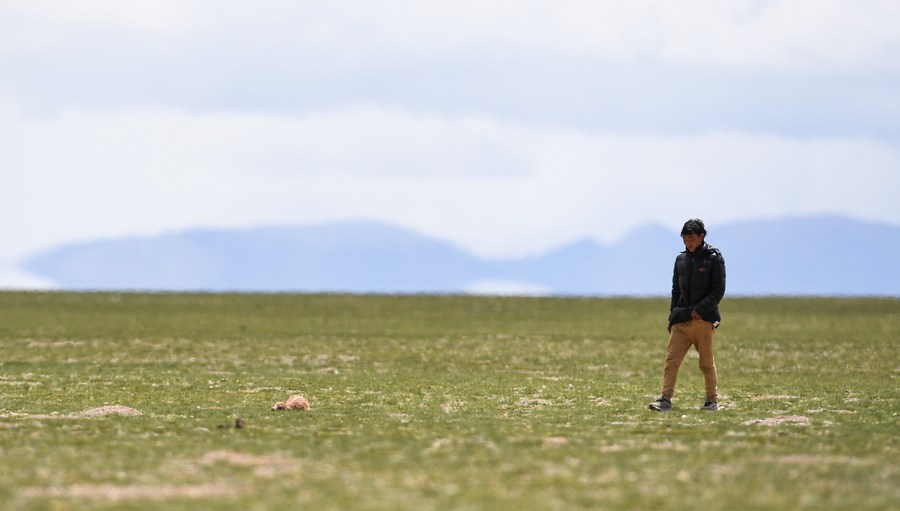
File photo shows a conservationist tries to rescue an injured Tibetan antelope in southwest China's Tibet Autonomous Region. (Xinhua/Purbu Zhaxi)
Covering an area of 298,000 square kilometers, Qiangtang is a major habitat for Tibetan antelopes, a native species of the Qinghai-Tibet Plateau in southwest China.
Due to massive illegal poaching, the species was classed as endangered in the 1980s.
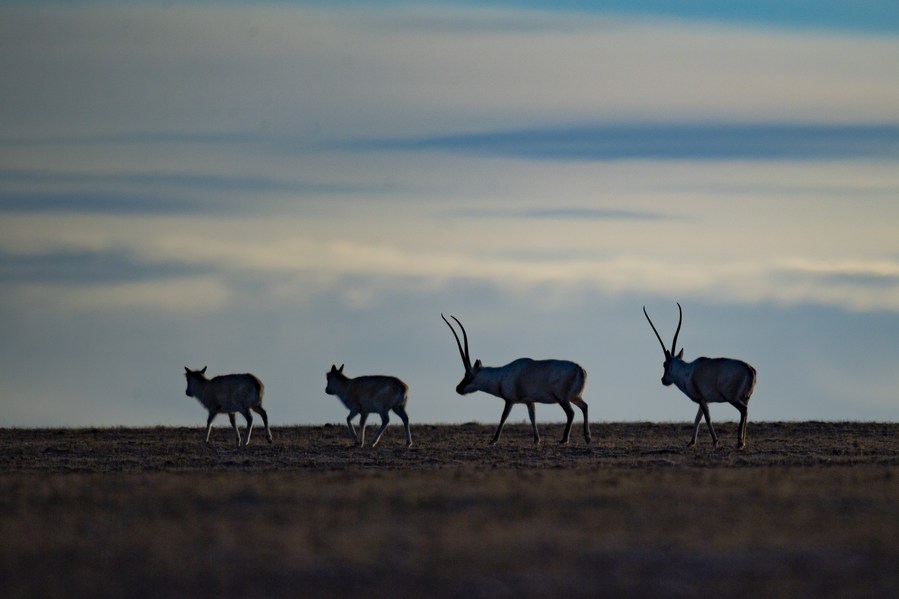
Photo taken on Jan. 31, 2019 shows Tibetan antelopes in Shuanghu County, southwest China's Tibet Autonomous Region. (Xinhua/Sun Fei)
To save them from extinction, a series of measures were rolled out; National nature reserves were created, and special teams were established to enforce protection laws. An anti-poaching campaign was launched along with regular patrols and population monitoring. Conservation education was also carried out among the people who lived in Tibetan antelope habitats.
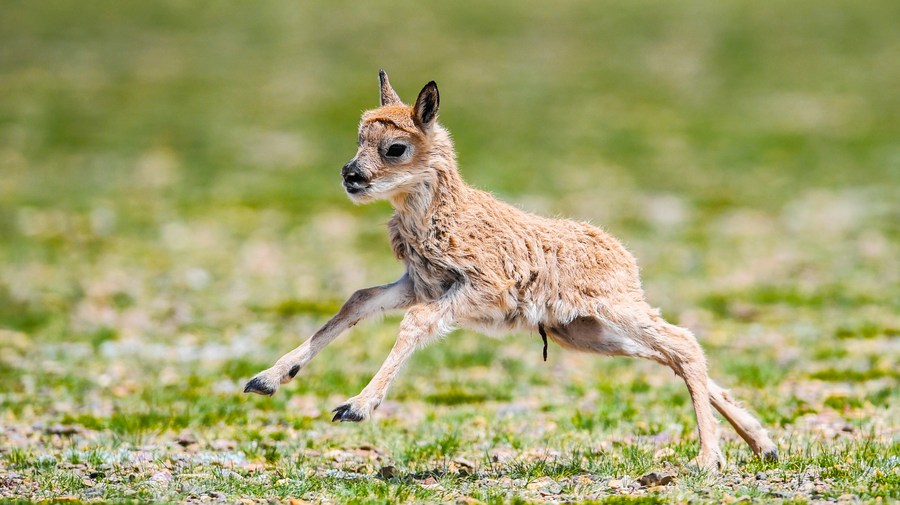
File photo shows a baby Tibetan antelope in Xainza County, southwest China's Tibet Autonomous Region. (Xinhua/Purbu Zhaxi)
"The pastoral lands are shared by both humans and wildlife. Humans can survive outside the rural land, but animals cannot," said Puqung.
With efforts from top to bottom, the Tibetan antelope population in Tibet has risen from around 50,000 in the 1990s to more than 200,000 today. The species has been brought back from the brink of extinction.
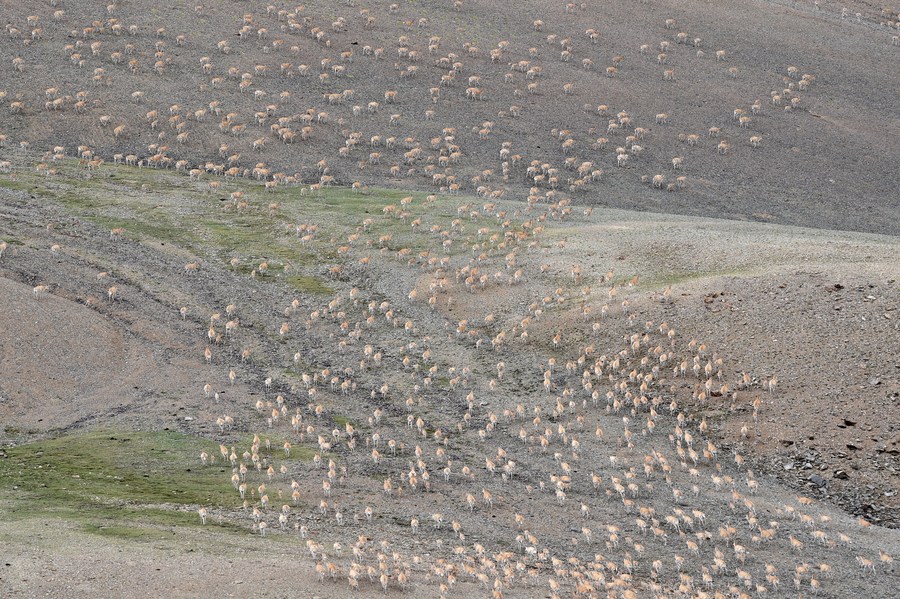
Photo taken on July 17, 2020 shows Tibetan antelopes in Rongmar Township of Nyima County, southwest China's Tibet Autonomous Region. (Xinhua/Chogo)
Qiangtang was one of the pilot zones in Tibet that spearheaded conservation administration reform. It established a four-level system with a guiding management bureau supported by two branch bureaus, which recruited 780 farmers and herders to patrol the program's 73 stations.
"Qiangtang has weaved a web to better monitor and protect the reserve. The conservation team, made up of local farmers and herders, is effective on the patrol work," said Zongga, deputy director of the regional department of forestry and grassland.
Tibetan antelopes are not the only species to benefit from the raft of measures. The region's population of Tibetan wild donkeys has risen from 50,000 to 90,000. Black-necked cranes have increased from less than 3,000 to 8,000, and the population of wild yaks has risen to 10,000.
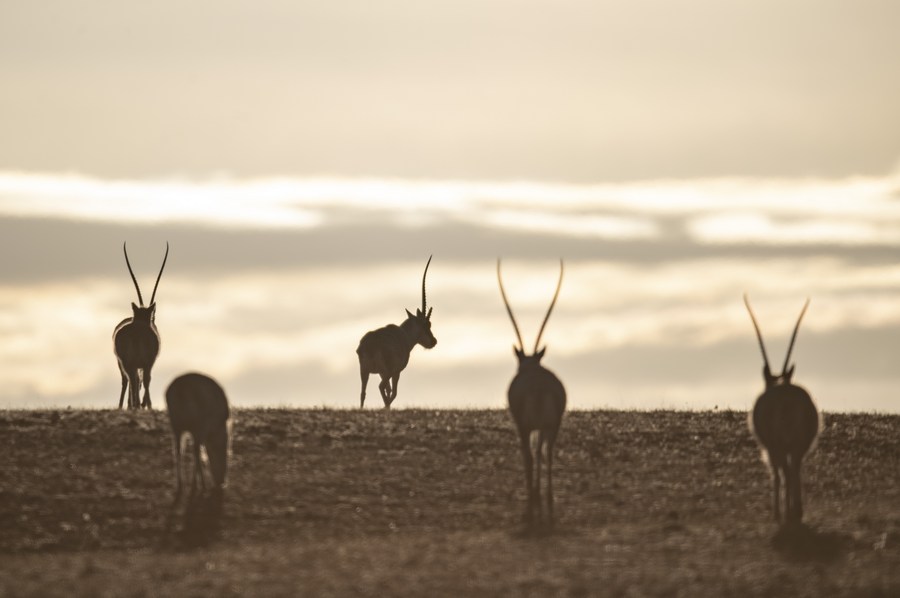
Photo taken on Jan. 31, 2019 shows Tibetan antelopes in Shuanghu County, southwest China's Tibet Autonomous Region. (Xinhua/Purbu Zhaxi)
To make more space for the wildlife, the regional government began to relocate whole county of Shuanghu, which was located in the heart of the Qiangtang nature reserve, in 2018.
"Stopping the extinction of Tibetan antelopes is one of China's ecological achievements. The concept of wildlife protection is now rooted among Tibetans. We can realize a harmonious co-existence of humans and wildlife in Tibet," said Zongga. ■



